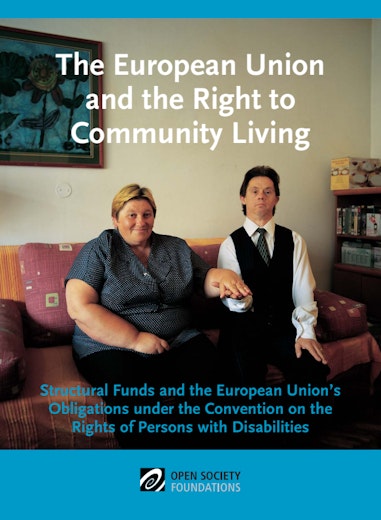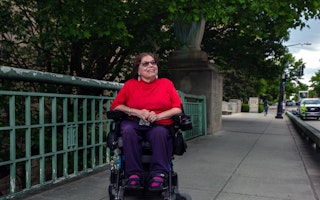For Europeans with Disabilities, a Move Toward Inclusion
By Ines Bulic
Last month, the European Parliament adopted a new set of rules for how EU Structural Funds should be used between 2014 and 2020. For the first time, the regulations are clear that this money—meant to reduce gaps in development and the living standard between regions in the EU—should support the development of community-based services for disabled people as an alternative to institutional care.
For this to happen, the European Commission has introduced certain conditions—the ex ante conditionalities. These require that EU member states have strategies in place to combat poverty and social exclusion, and to implement the UN Convention on the Rights of Persons with Disabilities.
As advocates for the right of all disabled people to live in the community, we consider this vote a much-needed push on both the EU member states and the European Commission.
More than 1.2 million disabled people are confined to institutions across the EU. Despite the severe lack of community-based services, more than €150 million in Structural Funds has been used to modernize institutions for disabled people in Central and Eastern Europe, or to build new ones. Much less has been invested into community-based alternatives.
In many cases, even those services that claim to promote “community living” have kept the old institutional approach. Examples of these include “living centers” for up to 25 people; group homes where the residents are not allowed to make any decisions for themselves; and projects which place children and adults with disabilities in the community, but where they cannot access education, employment, health care, or other services.
We now have seven years ahead of us during which we can make sure that Structural Funds facilitate the closure of institutions, help prevent new admissions, and open up mainstream services—such as housing, schools, and workplaces—to people with disabilities.
The first thing to do is to stop investments in institutional care, whether in the form of new buildings, or renovations like adding floors or installing solar panels. The next step, a more difficult one, is to ensure that enough money is allocated for the development of community-based services. To receive Structural Funds, all proposed projects should not just claim to be “community-based,” but should demonstrate how they promote the right of people with disabilities to choose how, where, and with whom they wish to live. They should facilitate genuine inclusion.
For this to happen, governments will have to be transparent about how they use Structural Funds and involve organizations of people with disabilities in a more meaningful way—something the new regulations require of them. They should also better communicate these investments to all involved: disabled people, the staff of institutions, and the public at large.
The European Commission, which has come a long way from justifying investments into institutions in 2007, will need to remain vigilant and look carefully at what is being achieved for those served by the projects, not just how fast the money is spent.
For additional information, please see the new report by the European Coalition for Community Living at the European Network on Independent Living. This publication was supported by a grant from the Open Society Foundations.
Ines Bulic is the coordinator of the European Coalition for Community Living at the European Network on Independent Living.


